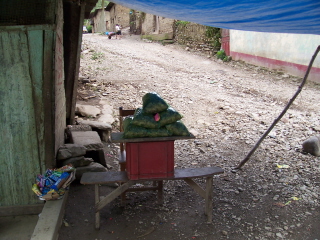Tensions continue to rise in the coca fields of Peru's Upper Huallaga Valley, with a coca eradication team attacked over the weekend, a strike by growers bubbling up in Huánuco state, more tough talk from President Alan GarcÃa, and a Wednesday announcement by the Peruvian police that they had found the link between growers and the violent remnants of the Shining Path guerrilla movement.

Last weekend, as eradication commenced again, a team of almost 200 civilian and police eradicators were ambushed in Yanajanca in the Tocache district, leaving one civilian eradicator dead and five police wounded. While the identity of the attackers remains unknown, police were quick to note that the area where the attack occurred is an area where a Shining Path remnant led by "Comrade Artemio" operates.
On Tuesday, coca farmers in Tingo MarÃa and Aucayacu went on strike, as did their comrades in Leoncio Prado province. Few reports were in by mid-week, but farmers had vowed to block highways. Among other things, they are asking for a meeting with a high-level government delegation.
But President GarcÃa Tuesday dismissed that call. "What delegation of high ranking officials?" he scoffed. "There is nothing to dialogue about because Peru needs to promote responsible agricultural development with alternative crop programs that will help put an end to drug production."
Drug traffickers are behind the strike, GarcÃa claimed. "It is evident that drug lords are orchestrating the strike. Just as in Colombia where drug lords have purchased the protection of para-military guerrilla groups to protect their illicit operations, they have done same with groups of coca farmers who run around protesting, 'let me grow whatever I feel like growing' and I am here to tell you that is not how it works," the Peruvian leader said.
By Wednesday, Peruvian authorities had switched from traffickers to the Shining Path as the culprits. In a loudly trumpeted (and conveniently timed) bust, Peruvian Police announced they had "finally placed the link" between restive coca farmers and the Shining Path. Police claimed two Shining Path members were arrested in Aucayacu as they awaited a meeting with coca farmer representatives. Police said they found weapons, ammunition, Shining Path propaganda, and detailed plans for blocking roads during protests.
Peru is the world's second largest producer of coca behind Colombia. Some 60,000 peasant families grow about 100 tons of the bushy plant, much more than is bought up by the state coca monopoly as a legitimate crop.
This work by StoptheDrugWar.org is licensed under Creative Commons Attribution-ShareAlike 4.0 International
Add new comment